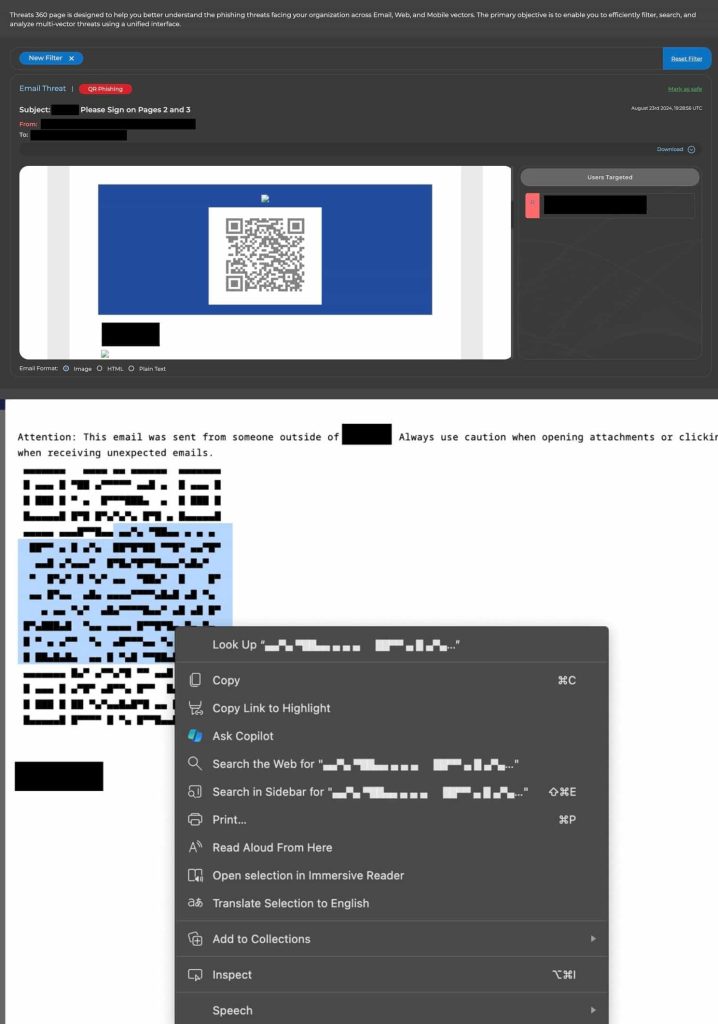BOOK THIS SPACE FOR AD
ARTICLE ADCybercriminals are exploiting Unicode QR codes in a new wave of phishing attacks. This sophisticated technique bypasses traditional security measures, making users vulnerable to malicious websites and data theft.
Cybercriminals are constantly innovating, and their latest trick involves QR codes. SlashNext has discovered a dangerous new phishing technique called “Unicode QR Code Phishing” that bypasses traditional security measures and demands immediate attention.
QR codes have become a common part of our digital lives, offering a quick and easy way to access information or websites. Unfortunately, this convenience has also made them a target for cybercriminals, as QR code phishing attacks have skyrocketed, attempting to lure victims out of secure email environments and into vulnerable mobile contexts where security is weaker.
Hackread reported a 587% surge in QR code phishing in early 2024 as Check Point Software Technologies identified 20,000 instances of attacks within the first two weeks of 2024, highlighting the vulnerability of QR codes to cybercriminals.
Traditionally, QR code phishing involves embedding image-based QR codes in emails or other messages. These codes, when scanned, would redirect users to malicious websites or trigger harmful actions. Many security vendors have developed effective methods to detect and block these image-based threats. However, threat actors have come up with a clever new way to trap unsuspecting users by crafting QR codes using Unicode text characters instead of images.
This new technique, known as “Unicode QR Code Phishing,” presents a significant challenge to conventional security measures because most security tools are designed to scan for suspicious images whereas Unicode QR codes bypass this scrutiny as these are text-based.
Moreover, these codes are easily readable by smartphone cameras despite being text-based and the same code can appear much different when viewed in plain text compared to when rendered on a screen, making detection even harder.
 The malicious unicode QR code used in the phishing scam analysed by SlashNext (Screenshot: J Stephen Kowski – SlashNext)
The malicious unicode QR code used in the phishing scam analysed by SlashNext (Screenshot: J Stephen Kowski – SlashNext)This unique approach has significant implications for security professionals and end-users alike. Many existing QR code detection mechanisms may become ineffective against Unicode QR code phishing attacks. This means that even users who are cautious about scanning QR codes may be at risk.
SlashNext’s research highlights the need for a comprehensive approach to security. Phishing attacks are no longer confined to emails and can occur across various platforms. To effectively protect against these threats, organizations must adopt a multi-layered security strategy.
End-users must avoid scanning QR codes from unknown sources, especially those in emails or messages and verify the source of the information provided by the code in public places before scanning. We suggest considering investing in mobile security applications or browser extensions for real-time protection against web-based threats.
.png)















 Bengali (Bangladesh) ·
Bengali (Bangladesh) ·  English (United States) ·
English (United States) ·